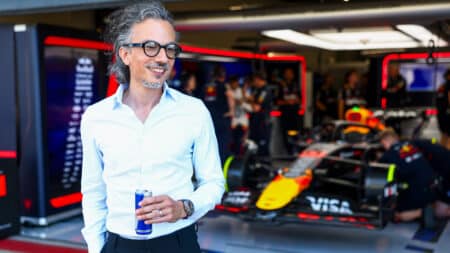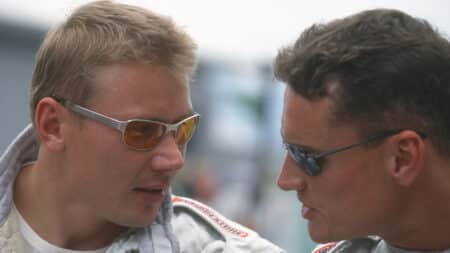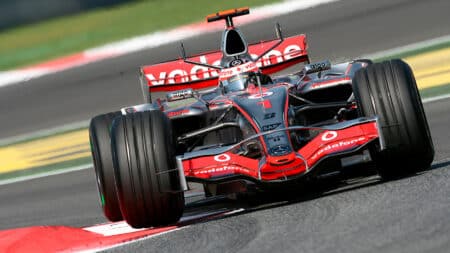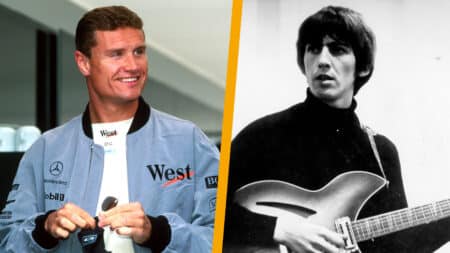
MPH: To the man trying to fill Christian Horner's shoes: good luck!
Laurent Mekies arrives as Red Bull F1 team principal with a series of immediate challenges to solve and long-term issues to tackle. He'll either sink or swim, says Mark Hughes
It was the kind of invitation you don’t receive too often, a chance to wander unchallenged into a contemporary Formula 1 pit and inspect the merchandise. Some teams have security goons by the door, but Marussia (né Virgin) – hewn from solid, no-nonsense racing stock – was never likely to be that way inclined.
It was the Thursday before the 2010 Bahrain Grand Prix and Virgin was one of three new teams poised to make its debut. Head of communications Tracy Novak spotted me meandering aimlessly through the vast, soulless paddock and asked if I’d like to see how things were progressing with the new car. I wandered in expecting to see a couple of shiny, fresh chassis on axle stands, primed for action, but was greeted by glorious chaos, with bits lying all around and everybody mucking in. Team principal John Booth – butcher, Formula Ford champion and winner of multiple junior titles as a team owner – was getting his hands dirty with some component or other, while 1999 British F3 champion Marc Hynes (head of driver development) was filing bits of carbon to fit. It was a throwback to an age before F1’s corporate regimentation.

I watched for 10 minutes, exchanging the odd word while trying to keep out of the way, then left them to it. The following day, drivers Lucas di Grassi and Timo Glock were both able to take part in free practice, although the German lost a wheel during the afternoon – a consequence of finger trouble borne of fatigue.
The team would last almost five seasons, but recently entered administration and news of its formal closure was delivered earlier today. Throughout that time it has been a beacon of courtesy in the F1 paddock: no airs, no graces, just a bunch of committed racers doing their level best with the limited means at their disposal. Ask a straight question and you got a straight answer, a template for how all teams should be. Ask for a cuppa and you got one of those, too. Mugs of tea were part of Marussia’s essence.
Earlier this season, few in the F1 community begrudged the team its first points – scored by Jules Bianchi, in Monaco. And everybody shared its utter despair post-Suzuka, where the young Frenchman suffered grievous injuries that have left him fighting for life. Pending results in the next two races, his points might have been worth a significant payout… but only if the team had continued.

Early in 2010, I asked Glock why he’d gambled on a newcomer when he’d had an offer from an established team (Renault) on the table. After two years driving for Toyota, where the top-heavy management was ill suited to the rapid decision-making F1 demands, he fancied a return to basics. “As soon as I visited the factory,” he said, “it reminded me very much of my time with iSport [the team that had guided him to the GP2 title in 2007]. I met a tightly knit group of proper racers, and that really appealed.”
Says it all, really.
The wider world might not miss the red-and-black cars that spent almost all their time towards the back of the field, but the team’s human qualities leave a gaping void.

Laurent Mekies arrives as Red Bull F1 team principal with a series of immediate challenges to solve and long-term issues to tackle. He'll either sink or swim, says Mark Hughes

Former McLaren F1 team-mates Mika Häkkinen and David Coulthard are set to renew old rivalries in a new Evening with... tour – they told James Elson all about it

In Formula 1, driver contracts may look iron-clad on paper, but history shows that some of its biggest stars have made dramatic early exits

Former McLaren F1 ace told James Elson about his private audience with The Beatles' George Harrison, who played an unreleased grand prix-themed song